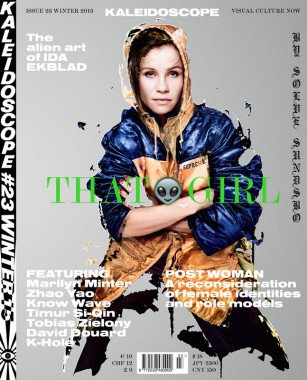
KALEIDOSCOPE Magazine 23, Winter 2015
Softcover, 272 pp., offset 4/4, 230 x 300 mm
English edition
ISSN 2038-4807
Published by KALEIDOSCOPE Press
$18.00 ·
Welcome to Kaleidoscope’s #23 (Winter 2015). Following the recent, successful redesign by Bureau Mirko Borsche, we are back with a brand new issue. The new formula is taking shape, new columnists and contributors are joining our ranks, and a lot of enthusiastic research went into curating the most compelling content out there.
In the opening section of HIGHLIGHTS, twelve profiles account for the best of the season: JASON MATTHEW LEE (by Alexander Shulan), DANIEL BAUMANN (by Aoife Rosenmeyer), MARYLIN MINTER (by Gianni Jetzer), MAGALI REUS (by Ruba Katrib), KNOW WAVE RADIO (by Alexandre Stipanovich), BEATRICE GIBSON (by George Vasey), CATHERINE AHEARN (by Tobias Czudej), K-HOLE (by Kevin McGarry), JAMIAN JULIANO-VILLANI (by Joshua Abelow), ALESSANDRO BAVA (by Francesco Garutti), ZHAO YAO (by Venus Lau), and IDEA BOOKS (by Xerxes Cook).
At a time when feminism resurges both in critical discourse and media headlines, while at the same time entering a list of words overdue to be banned, our signature MAIN THEME section is devoted to a reconsideration of female identities and role models. POST WOMAN is composed of a think tank, a think piece by Natasha Stagg and five interviews, including with Juliana Huxtable (by Andrew Durbin), Amalia Ulman (by Francesca Gavin), Judith Bernstein (by Hanne Mugaas), Massimiliano Gioni on “La Mamma” (with Pietro Rigolo), and Girls Like Us (by Felix Burrichter).
To follow, this issue’s MONO section and cover story are dedicated to Norwegian artist IDA EKBLAD. Fueled by an outright marvel for this thing called art, her work is distinguished by an extreme degree of impatience and prolificness. Her shift and turns are the result of a feverish engagement with pure materiality, synthesized with popular culture and animated by alien transformations. This definitive monographic survey comprises an essay by Peter J. Amdam, an interview by Cory Arcangel and an original portrait by Sølve Sundsbø.
Later on, the VISIONS section invites the eye to an enthralling journey across almost 100 pages of visual contributions by artists, curators and image-makers, including: TOBIAS ZIELONY, “Jenny Jenny”; MR.; “Chicago”: BARBARA CRANE and TONY LEWIS; DAVID DOUARD in Los Angeles; JONAS WOOD; “Alliantecnik,” curated by Alessio Ascari; TIMUR SI-QIN, “Premier Machinic Funerary”; and GRAHAM LITTLE.
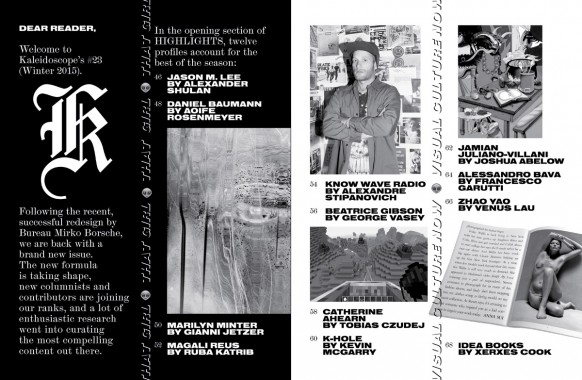
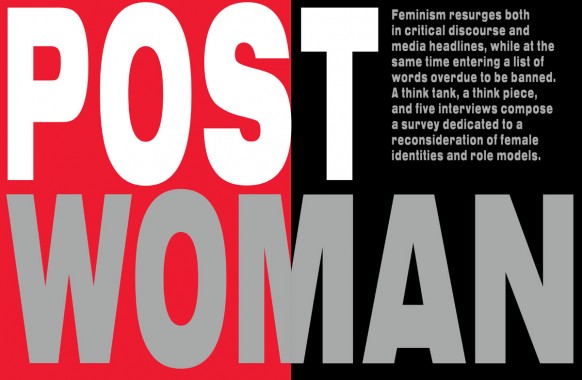
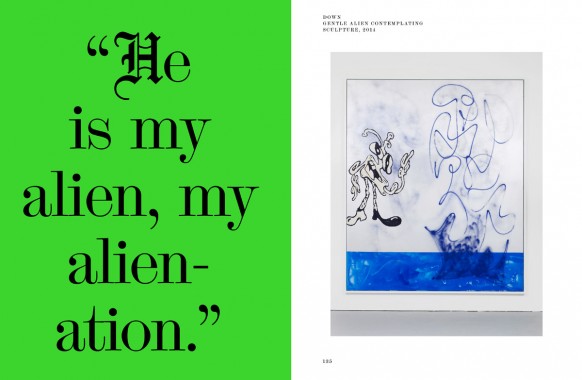
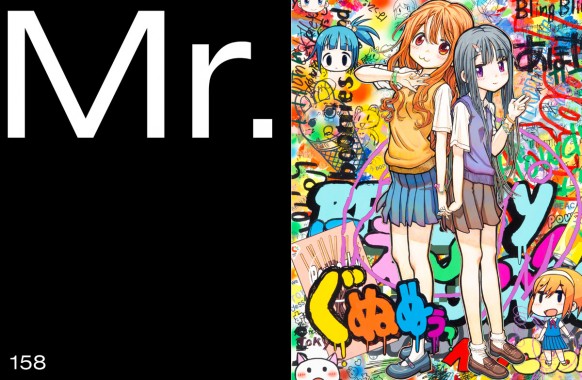
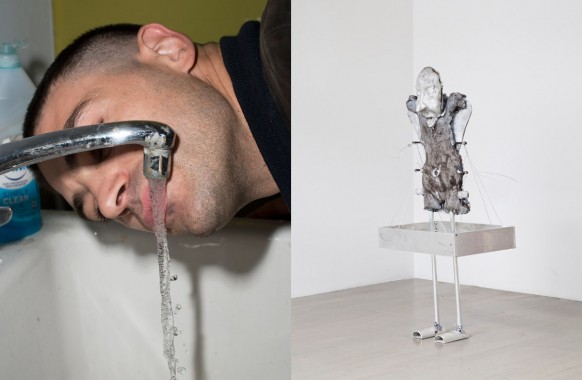
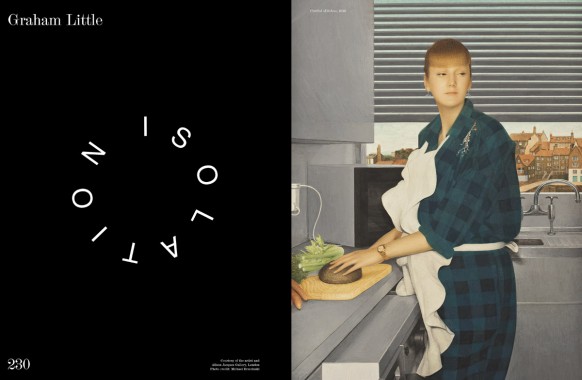
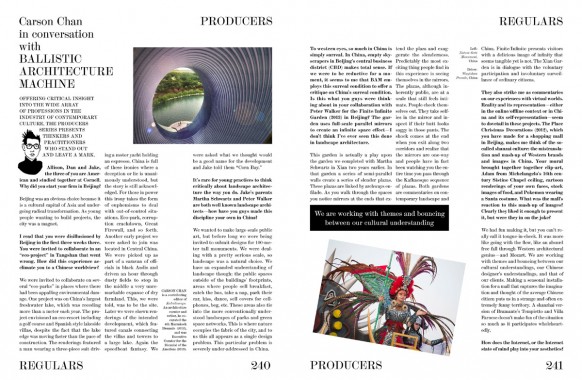
Alessandro Bava, Alessio Ascari, Alexander Shulan, Alexandre Stipanovich, Amalia Ulman, Andrew Durbin, Aoife Rosenmeyer, Art, Barbara Crane, Beatrice Gibson, Catherine Ahearn, Cory Arcangel, Culture, Daniel Baumann, David Douard, Distribution, Felix Burrichter, Francesca Gavin, Francesco Garutti, George Vasey, Gianni Jetzer, Graham Little, Hanne Mugaas, Ida Ekblad, Idea Books, Jamian Juliano-Villani, Jason Matthew Lee, Jonas Wood, Joshua Abelow, Judith Bernstein, Juliana Huxtable, KALEIDOSCOPE Press, Kevin McGarry, Magali Reus, Marilyn Minter, Massimiliano Gioni, Mirko Borsche, Natasha Stagg, Peter J Amdam, Pietro Rigolo, Ruba Katrib, Sølve Sundsbø, Timur Si-Qin, Tobias Czudeji, Tobias Zielony, Tony Lewis, Venus Lau, Xerxes Cook, Zhao Yao
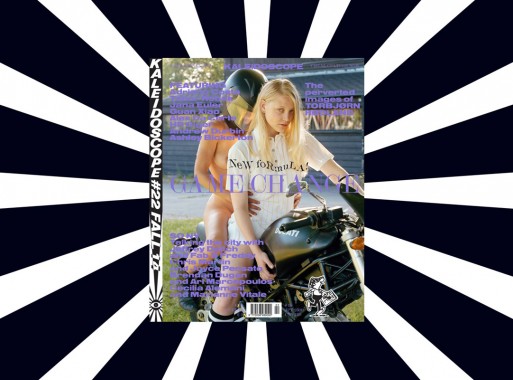
KALEIDOSCOPE Magazine 22, Fall 2014
Softcover, 256 pp. + Ari Marcopoulos poster, offset 4/4, 230 x 300 mm
English edition
ISSN 2038-4807
Published by KALEIDOSCOPE Press
$18.00 ·
Kaleidoscope’s newest release, Issue 22 (Fall 2014), introduces a completely redesigned and revamped version of the magazine, under the visionary art direction of Munich-based Bureau Mirko Borsche. The magazine’s new direction combines its defining curatorial and interdisciplinary approach with an emphasis on the power of images and a keen attention to the update, and is best epitomized by the new cover tagline: VISUAL CULTURE NOW.
In the renovated opening section of HIGHLIGHTS, twelve profiles account for the best of the season: Boychild (by Francesca Gavin), Ed Fornieles (by George Vasey), Adriano Costa (by Laura McLean-Ferris), Liu Chuang (by Venus Lau), Carol Rama (by Jesi Khadivi), Tabor Robak (by Alex Gartenfeld), Jana Euler (by Martha Kirszenbaum), Guan Xiao (by Pablo Larios), Alex Da Corte (by Piper Marshall), David Ostrowski (by Peter J. Amdam), Aphex Twin (by Francesco Tenaglia), and Torey Thornton (by Ross Simonini).
To follow, our signature MAIN THEME section, titled SO NY, is dedicated to practices informed and inspired by the city of New York. From the gritty urban feeling to the great sense of community — living and working in NYC provides endless inspiration and fuel for artists and creators. We have selected four pairs, from different generations and circles, to share memories and discuss perspectives: Jeffrey Deitch and Fab 5 Freddy, Chris Martin and Joyce Pensato, Brendan Dugan and Ari Marcopoulos, and Cecilia Alemani and Marianne Vitale. The result is a choral tale of convergences, strategies, connections, and old and new magics. Enriched with a collectable poster by Ari Marcopoulos!
On the other hand, the MONO section and cover story are dedicated to Norwegian, Los Angeles-based photographer Torbjørn Rødland. Seemingly speaking the fetishistic idiom of advertisement, marketing and food photography, Rødland’s images are in fact pervaded by the most compelling kind of perversity and haunted by boredom, spiritual longing, and a sense of aftermath. This monographic survey comprises an essay by Chris Sharp, an interview by Hanne Mugaas, and original portraits by Trine Hisdal.
Later on, a brand new section invites the eye to an enthralling journey across over 80 pages of visual contributions by artists, curators and image-makers, affirming the magazine’s centrality as a tool to show and experience art. This issue’s VISIONS include “Chopped & Screwed: Austin Lee and David Benjamin Sherry,” curated by Alessio Ascari; H.R. Giger’s “Biomechanoid”; Dorothea Tanning’s “Paintings”; Alexandra Bachzetsis’s “From A to B via C”; “Rondes Bosses,” curated by Nicolas Trembley; Chris Wiley’s “Technical Compositions”; and David Rappeneau’s “$$$$$$$$$$$$$$$$$$$$$$$$$$$.”
Lastly, the closing section of REGULARS features our insightful columns on the past, present and future of art and culture: in the first installment of Futura 89+ Hans Ulrich Obrist and Simon Castets interview American poet Andrew Durbin; Producers features Carson Chan’s conversation with Artsy’s founder Carter Cleveland; Christopher Schreck explores Francesco Clemente’s India as part of the Panorama series; and in Pioneers Fredi Fischli and Niels Olsen talk to legendary artist Ashley Bickerton.
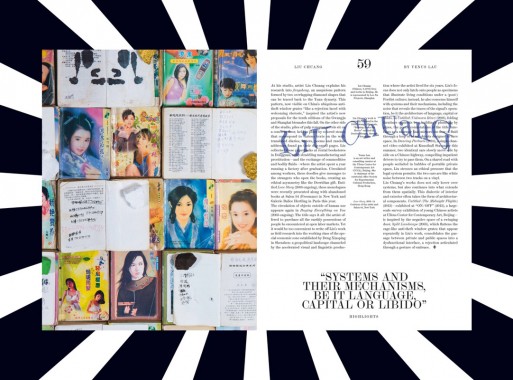
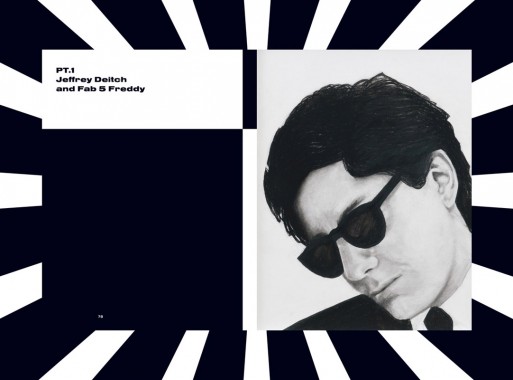
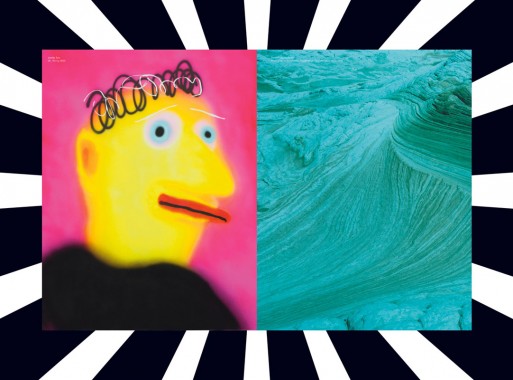
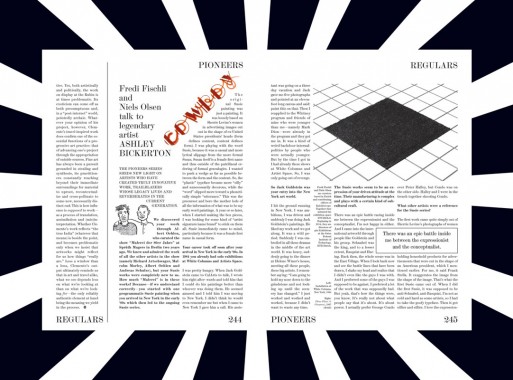
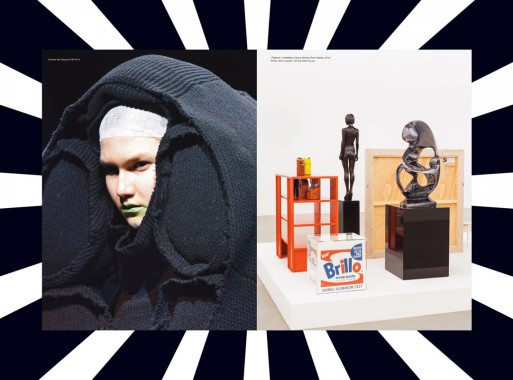
Adriano Costa, Alessio Ascari, Alex Da Corte, Alex Gartenfeld, Alexandra Bachzetsis, Andrew Durbin, Aphex Twin, Ari Marcopoulos, Art, Ashley Bickerton, Austin Lee, Brendan Dugan, Carol Rama, Carson Chan, Carter Cleveland, Cecilia Alemani, Chris Martin, Chris Sharp, Chris Wiley, Christopher Schreck, Culture, David Benjamin Sherry, David Ostrowski, David Rappeneau, Distribution, Dorothea Tanning, Ed Fornieles, Fab 5 Freddy, Francesca Gavin, Francesco Clemente, Francesco Tenaglia, Fredi Fischli, George Vasey, Guan Xiao, H.R. Giger, Hanne Mugaas, Hans Ulrich Obrist, Jana Euler, Jeffrey Deitch, Jesi Khadivi, Joyce Pensato, KALEIDOSCOPE Press, Laura McLean-Ferris, Liu Chuang, Marianne Vitale, Martha Kirszenbaum, Mirko Borsche, Nicolas Trembley, Niels Olsen, Pablo Larios, Peter J Amdam, Piper Marshall, Ross Simonini, Simon Castets, Tabor Robak, Torbjørn Rødland, Torey Thornton, Trine Hisdal, Venus Lau
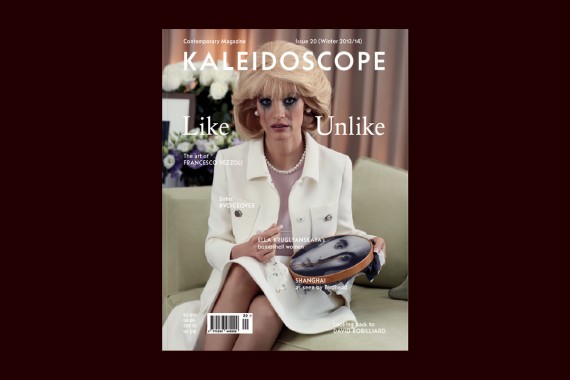
KALEIDOSCOPE Magazine 20 — Winter 2014
Softcover, 242 pp. + three special inserts, offset 4/4, 220 x 287 mm
English edition
ISSN 2038-4807
Published by KALEIDOSCOPE Press
$18.00 ·
The opening section of HIGHLIGHTS features Latvian-born painter Ella Kruglyanskaya (words by Chris Sharp); Danish performer Christian Falsnaes (interview by Raimar Stange); American painter Ned Vena (words by Mathieu Malouf); British artist Haroon Mirza (interview by Thom O’Nions); and Berlin-based Loretta Fahrenholtz (words by Michele D’Aurizio).
Edited by Kaleidoscope’s editor-in-chief Alessio Ascari and entitled #VOICEOVER, the MAIN THEME section is dedicated to the deployment of off-camera commentary as a conceptual device in moving image works. The survey presents an overview by Shama Khanna on a new generation of artists, including Ed Atkins, Camille Henrot, Pilvi Takala, Duncan Campbell and Laure Prouvost; a case study by Pablo Larios on Jordan Wolfson; an essay by Marie de Brugerolle on French filmmakers Chris Marker and Jean-Luc Godard; and a conversation between Oliver Laric and George Vasey on voiceover in the pop realm.
Riding the edge of contemporary art and show business, the controversial work of Francesco Vezzoli, our cover story and the subject of the MONO section, occupies a schizophrenic space between pop and conceptualism, high and low, cynicism and criticality. The section comprises an essay by Andrea Viliani, an interview by Kevin McGarry, and a visual project specially created by the artist based on Grindr profiles.
A selection of videos featured in the Mono and Main Theme sections will be soon available to watch on KALEIDOSCOPE Videoclub, our new online channel of video exhibitions. Stay tuned!
Lastly, this issue’s section of REGULARS features Hans Ulrich Obrist introducing Swiss artist Kaspar Müller; Carson Chan meeting young global curator Simon Castets; Davide Quadrio reporting on the art scene in Shanghai, in conversation with local duo Birdhead; Fredi Fischli and Niels Olsen rediscovering the art of Chicago artist Christina Ramberg in conversation with Albert Oehlen; and Matthew Erickson inaugurating a new series of articles focused on single art works, Close-up, with an in-depth look at Matthew Barney’s latest project, River of Fundament.
The issue is enriched by our seasonal TIPS on following, reading, listening, stopping by, meeting and visiting; as well as by three SPECIAL INSERTS by Belgian collective Leo Gabin, British maverick David Robilliard and Japanese legendary illustrator Hajime Sorayama.
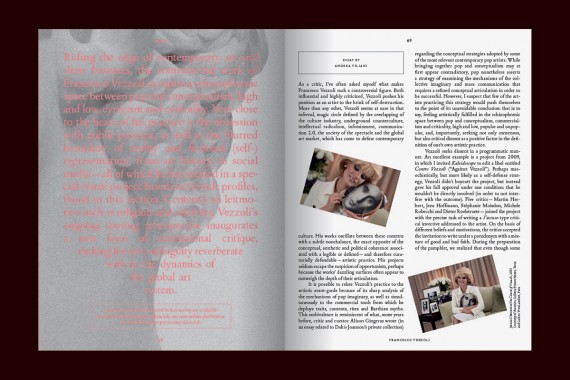
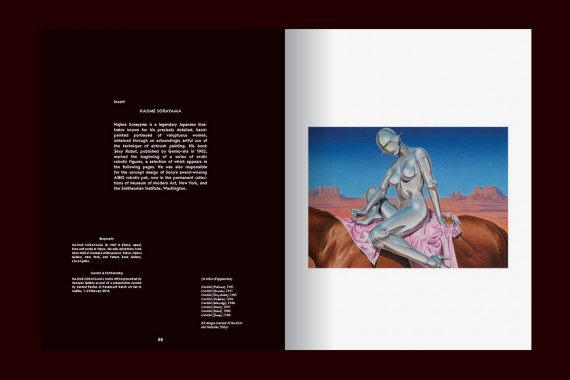
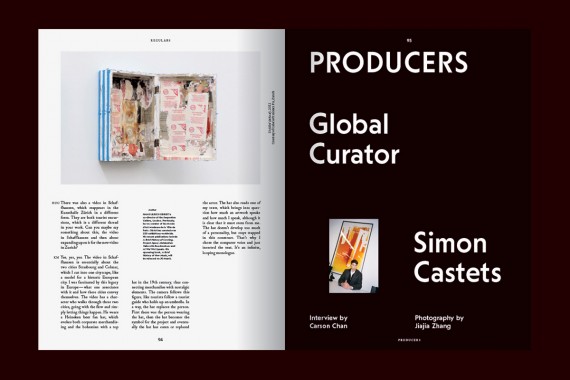
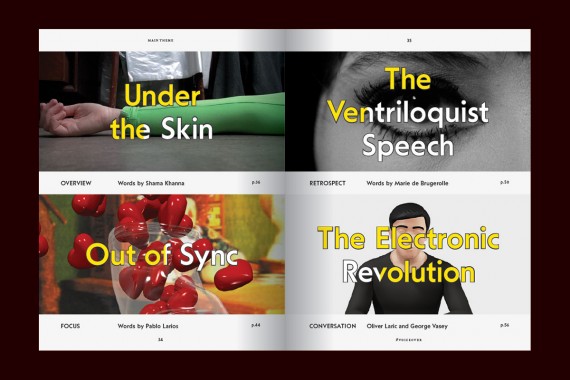
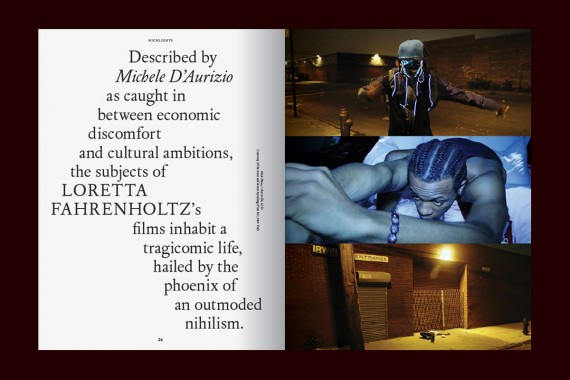

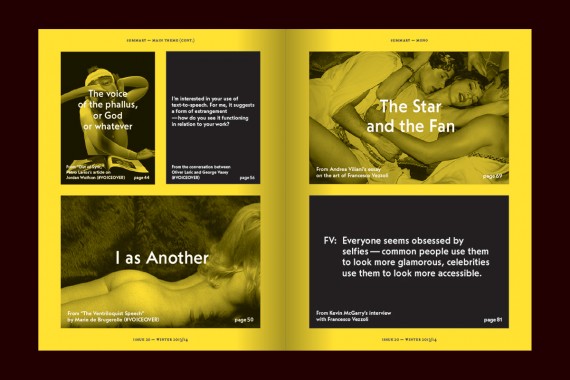
Albert Oehlen, Alessio Ascari, Andrea Viliani, Art, Camille Henrot, Carson Chan, Chris Marker, Christian Falsnaes, Christina Ramberg, David Robilliard, Distribution, Duncan Campbell, Ed Atkins, Ella Kruglyanskaya, Francesco Vezzoli, Fredi Fischli, George Vasey, Hajime Sorayama, Hans Ulrich Obrist, Haroon Mirza, Jean-Luc Godard, Jordan Wolfson, KALEIDOSCOPE Press, Kaspar Müller, Kevin McGarry, Laure Prouvost, Loretta Fahrenholtz, Marie de Brugerolle, Mathieu Malouf, Matthew Barney, Matthew Erickson, Michele D'Aurizio, Ned Vena, Niels Olsen, Oliver Laric, Pablo Larios, Pilvi Takala, Raimar Stange, Shama Khanna, Simon Castets, Thom O'Nions
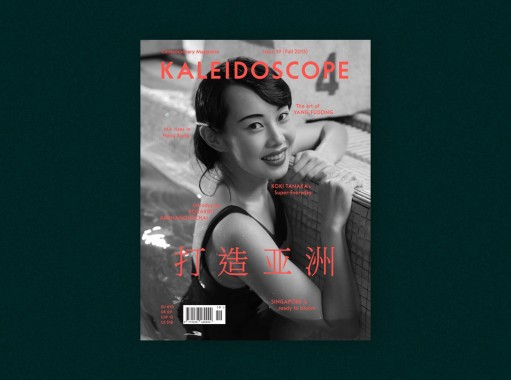
KALEIDOSCOPE Magazine 19 — Fall 2013
Softcover, 242 pp. + three special inserts, offset 4/4, 220 x 287 mm
English edition
ISSN 2038-4807
Published by KALEIDOSCOPE Press
$18.00 ·
KALEIDOSCOPE issue 19 (Fall 2013), is a special edition dedicated to contemporary art and culture produced in the Asia Pacific region. The release of this special edition — the first product of an ongoing investigation, evidencing KALEIDOSCOPE’s commitment towards establishing a presence in Asia — will be celebrated with a series of international launches and will inaugurate, in addition to the standard international circulation of the magazine, an extended distribution in Asian countries.
The opening section of HIGHLIGHTS features: LA-based Japanese artist Koki Tanaka, who pursues the Super-Everyday to find beauty in the ordinary, as explained by Miwako Tezuka; Chinese artist Li Ran, framed by Ho Rui An as attempting to get over the “postcolonial hangover”; Basir Mahmood, who directs his pragmatist gaze upon what Gemma Sharpe describes as the sociological imperatives of Pakistan’s urban life; Korean New Zealand artist Seung Yul Oh, whose practice is read by Emma Bugden as blurring the lines of art and play; and Filipino artist Maria Taniguchi, whose patterns and repetitions are, according to Joselina Cruz, elements of her latent archeology.
Evocatively titled The Making of Asia, the MAIN THEME section discusses the creation and diffusion of local narratives in the Asia Pacific region: editor-in-chief Alessio Ascari interviews Lars Nittve, the director of Hong Kong’s megamuseum M+; art duo Desire Machine Collective talk to Shai Heredia, the founder of India’s most cutting-edge film festival; Gavin Wade speaks to Cao Fei about his new film and the problem of urbanization in metropolitan China; and a panel discussion brings together art initiatives from in and beyond the region — Arthub Asia, Guggenheim UBS Map, Asia Art Archive, and Tate Research Centre: Asia Pacific — around the idea of network.
Sitting between the traditions of cinema and visual art, the work of Chinese artist Yang Fudong — the protagonist of this issue’s MONO — resonates with the cinematic and photographic tropes of a city and society that is also “in between”: the decadent aura of Shanghai in the 1920s and 1930s. As discussed in an essay by Davide Quadrio and Noah Cowan and an interview by Li Zhenhua, Fudong’s crisp black-and-white 35mm films enact a subtle interplay between the political and the abstract, revealing the artist’s passionate attraction to beauty and a rarified approach to the haunting questions of contemporary life.
Lastly, this issue’s section of REGULARS features Hans Ulrich Obrist introducing Thai artist Korakrit Arunanondchai; Gary Carrion-Murayari staging a three-way interview with art collectives The Propeller Group (Vietnam) and CAMP (India); Carson Chan meeting cultural activist Ou Ning; Melanie Pocock reporting on the art scene in Singapore; and Fredi Fischli and Niels Olsen rediscovering the art of cult psychedelic artist Keiichi Tanaami.
The issue is enriched by our seasonal TIPS on following, reading, listening, stopping by, meeting and visiting; as well as by three SPECIAL INSERTS, including a selection of paintings by Chinese artist Wang Xingwei; pictures by Japanese photographer Keizo Kitajima; and a series of digital collages by Filipino artist Pio Abad.
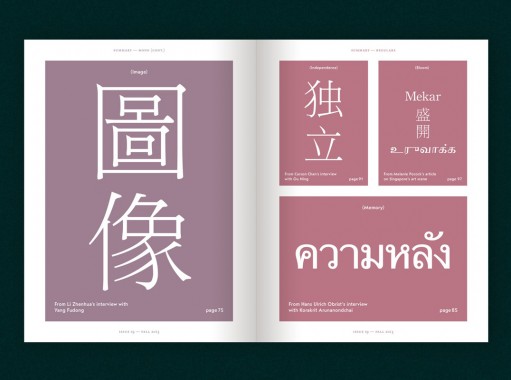
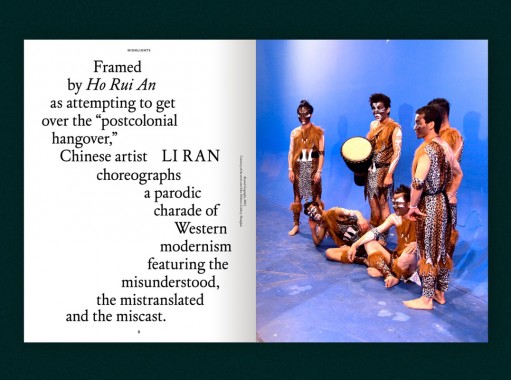
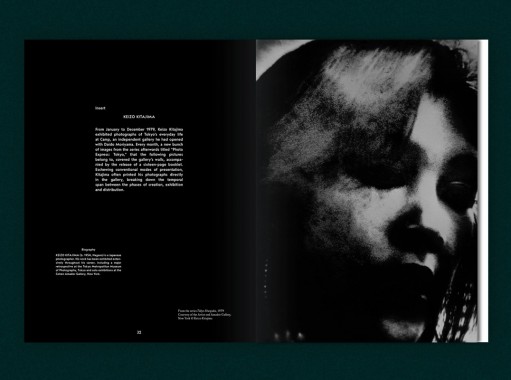
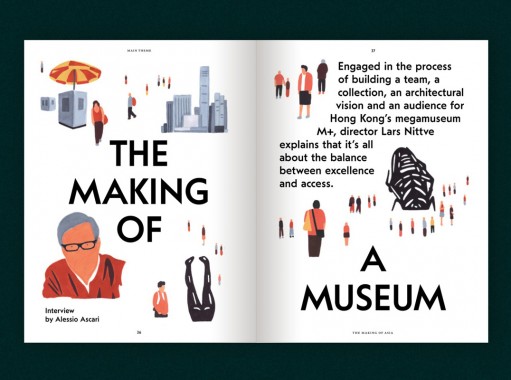
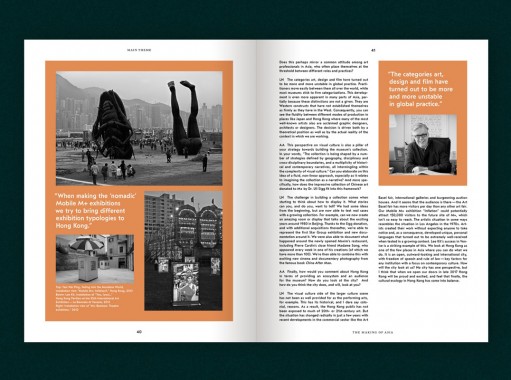
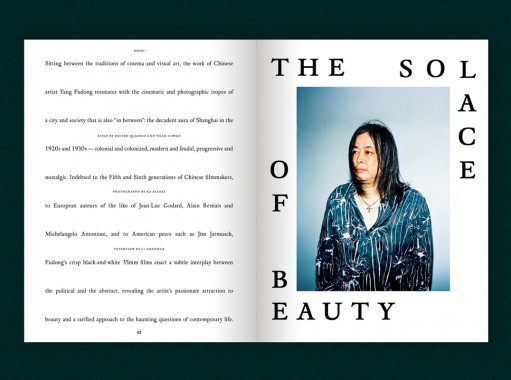
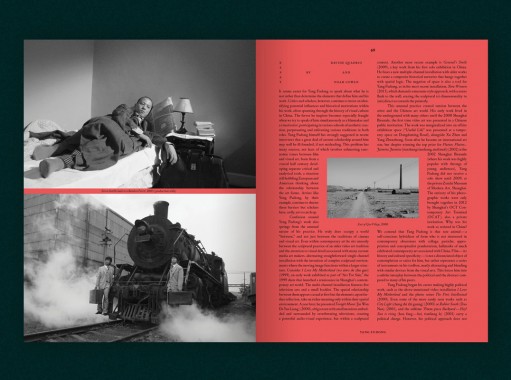
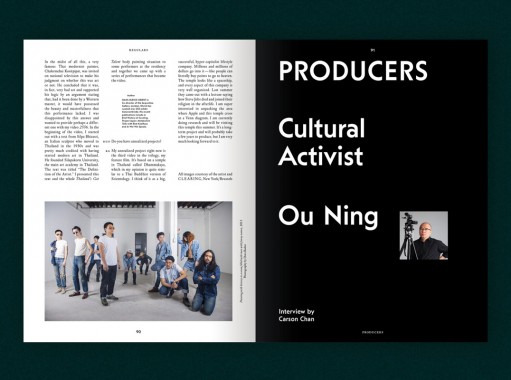
Alessio Ascari, Art, Asia, Basir Mahmood, CAMP, Cao Fei, Carson Chan, Davide Quadrio, Desire Machine Collective, Distribution, Emma Bugden, Fredi Fischli, Gary Carrion-Murayari, Gavin Wade, Gemma Sharpe, Hans Ulrich Obrist, Ho Rui An, Joselina Cruz, KALEIDOSCOPE Press, Keiichi Tanaami, Keizo Kitajima, Koki Tanaka, Korakrit Arunanondchai, Li Ran, Li Zhenhua, Maria Taniguchi, Melanie Pocock, Miwako Tezuka, Niels Olsen, Noah Cowan, Ou Ning, Pio Abad, Seung Yul Oh, Shai Heredia, The Propeller Group, Wang Xingwei, Yang Fudong
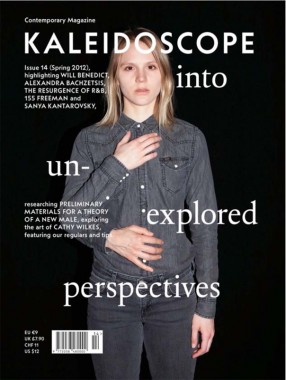
KALEIDOSCOPE Magazine 14 — Spring 2012
Softcover, 168 pp., offset 4/4, 220 x 287 mm
ISSN 2038-4807
Published by KALEIDOSCOPE Press
$12.00 ·
At the core of a platform that includes an exhibition space and an independent publishing house, KALEIDOSCOPE is an international quarterly of contemporary art and culture founded in 2009 in Milan. Distributed worldwide on a seasonal basis, it has gained widespread recognition as a trusted and timely guide to the present (but also to the past and possible futures), unique in its interdisciplinary and unconventional approach.
HIGHLIGHTS
Will Benedict by Alex Kitnick; Alexandra Bachzetsis by Catherine Wood; 155 Freeman by Chris Wiley; The Resurgence of R&B by Tim Small; Sanya Kantarovsky by Joanna Fiduccia.
MAIN THEME — Preliminary Materials for a Theory of a New Male Camp + Dandyism = Neo-Camp? by Chris Sharp; Domenico Gnoli by Giorgio Verzotti; Marc Camille Chaimowicz Partial Eclipse; A Fantastic, Single, Mad Man by Alessio Ascari and Cristina Travaglini.
MONO — Cathy Wilkes
Essay by Rebecca Geldard; Essay by Amy Budd; Special Project by Cathy Wilkes; Focus by Isobel Harbison.
REGULARS
Pioneers: Monir S. Farmanfarmaian by Simone Menegoi; Futura: Adrian Villar Rojas by Hans Ulrich Obrist; Panorama: Mexico City by Magnolia de la Garza; Souvenir d’Italie: Alighiero Boetti by Luca Cerizza; Producers: Gavin Brown by Carson Chan.
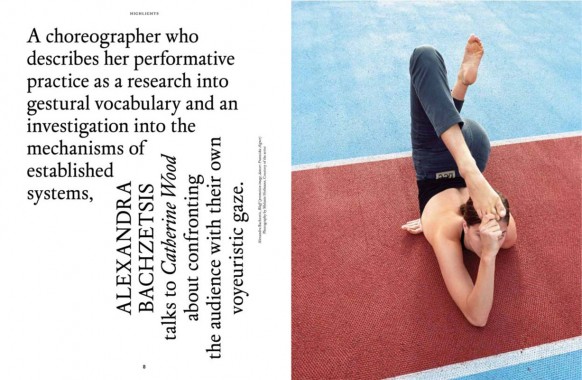
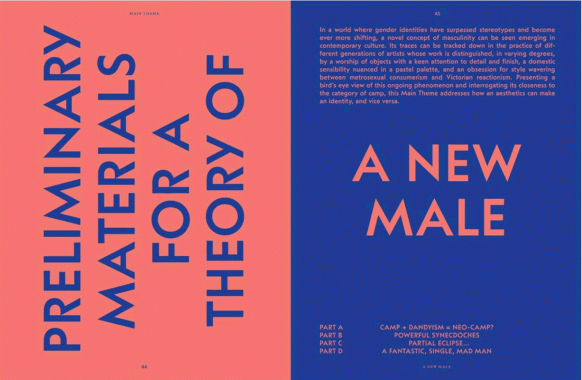
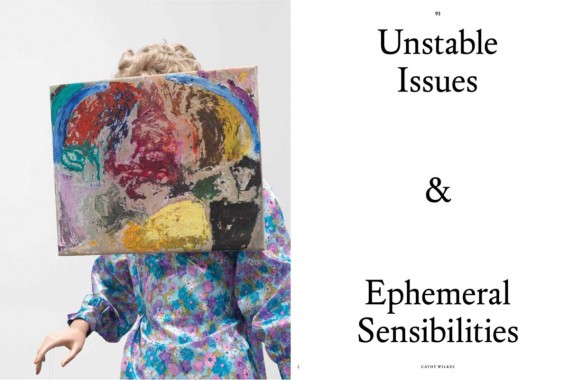
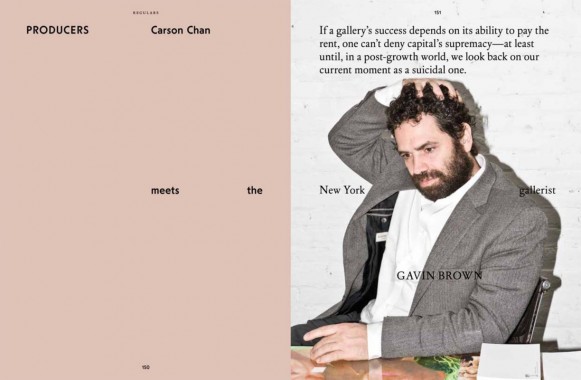
Adrian Villar Rojas, Alessio Ascari, Alex Kitnick, Alexandra Bachzetsis, Alighiero Boetti, Amy Budd, Art, Carson Chan, Catherine Wood, Cathy Wilkes, Chris Sharp, Chris Wiley, Cristina Travaglini, Culture, Distribution, Domenico Gnoli, Gavin Brown, Giorgio Verzotti, Hans Ulrich Obrist, Isobel Harbison, Joanna Fiduccia, KALEIDOSCOPE Press, Luca Cerizza, Magnolia de la Garza, Marc Camille Chaimowicz, Monir S. Farmanfarmaian, Rebecca Geldard, Sanya Kantarovsky, Simone Menegoi, Tim Small, Will Benedict
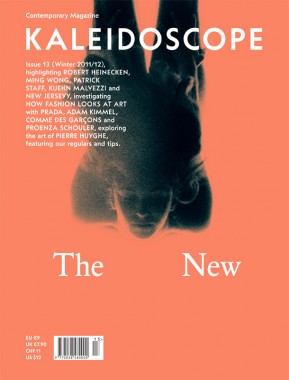
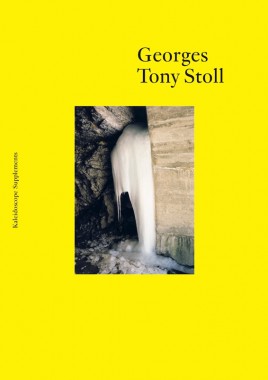
Kaleidoscope Magazine 13, The New
Softcover, 262 pp., offset 4/4, 220 x 287 mm
Softcover, 48 pp., offset 4/4, 190 x 270 mm [Georges Tony Stoll supplement]
ISSN 2038-4807
ISBN 978-88-97185-18-5
Published by Kaleidoscope Press
$12.00 ·
At the core of a platform that includes an exhibition space and an independent publishing house, Kaleidoscope is an international quarterly of contemporary art and culture founded in 2009 in Milan. Distributed worldwide on a seasonal basis, it has gained widespread recognition as a trusted and timely guide to the present (but also to the past and possible futures), unique in its interdisciplinary and unconventional approach.
For the Winter 2011/12, editor-in-chief Alessio Ascari is proud to present the first issue of Kaleidoscope magazine under the art direction of the prominent London-based design studio OK-RM — Oliver Knight and Rory McGrath.
HIGHLIGHTS
Robert Heinecken by Kavior Moon; Ming Wong by Hu Fang; Kuehn Malvezzi by Hila Peleg; New Jerseyy by Quinn Latimer; Patrick Staff by Catherine Wood.
MAIN THEME — How Does Fashion Look at Art?
Adam Kimmell by Angelo Flaccavento; Commes des Garçons by Maria Luisa Frisa; Proenza Schouler by Michele D’Aurizio.
MONO — Pierre Huyghe
Essay by Éric Troncy; Interview by Barbara Casavecchia; Special Project: Study for Zoodram; Focus by Chris Wiley.
REGULARS
Pioneers: Bruce McLean by Simone Menegoi; Futura: Ed Atkins by Hans Ulrich Obrist; Panorama: Toronto by Amil Niazi; Souvenir d’Italie: Luigi Ghirri by Luca Cerizza; Producers: Ute Meta Bauer by Carson Chan.
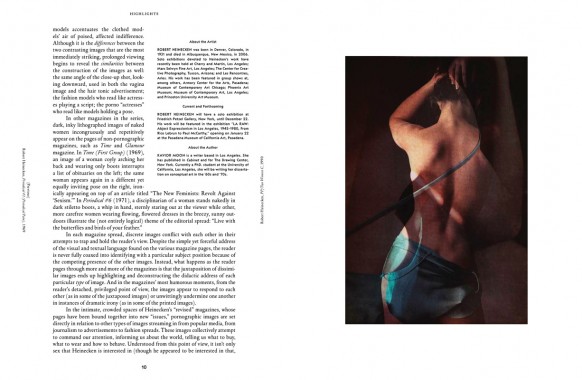
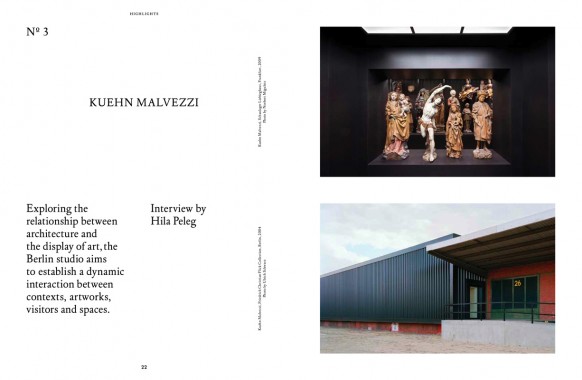
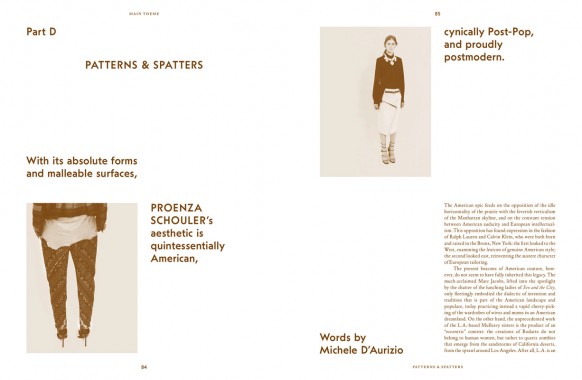
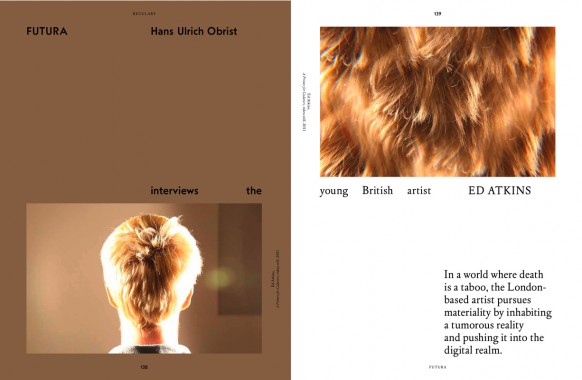
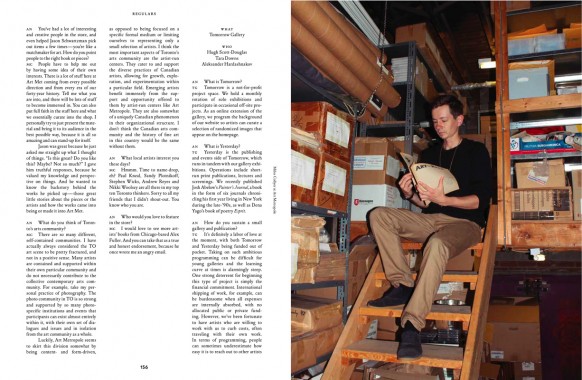
Adam Kimmell, Alessio Ascari, Aliina Astrova, Amil Niazi, Angelo Flaccavento, Art, Barbara Casavecchia, Bruce McLean, Carson Chan, Catherine Wood, Chris Wiley, Commes des Garçons, Cristina Travaglini, Culture, Distribution, Ed Atkins, Éric Troncy, Francesco Vezzoli, Georges Tony Stoll, Hans Ulrich Obrist, Hila Peleg, Hu Fang, Joanna Fiduccia, KALEIDOSCOPE Press, Kavior Moon, Klingspor, Kuehn Malvezzi, Laurenz Brunner, Luca Cerizza, Luigi Ghirri, Maria Luisa Frisa, Michele D'Aurizio, Ming Wong, Nicholas Cullinan, OK-RM, Oliver Knight, Patrick Staff, Photography, Pierre Huyghe, Proenza Schouler, Quinn Latimer, Robert Heinecken, Rory McGrath, Simone Menegoi, Ute Meta Bauer










































